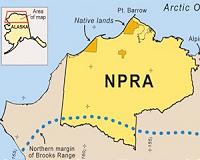 |
Montreal (AFP) May 9, 2011 Quebec unveiled an $80-billion plan on Monday to rev up forestry and mining development over the next 25 years in its vast northern region, dubbed one of the world's last unspoiled wildernesses. Quebec Premier Jean Charest rolled out his "North Plan" as Canada emerges from a recession, promising to create or support 20,000 jobs annually in the farming, forestry, mining and tourism sectors north of the 49th parallel. It is an "ambitious project," he told a press conference, one that has elicited praise from the business community, in "one of the last untouched territories of the world, filled with riches." The huge region being targeted for renewal is more than twice the size of France, but is inhabited by only 128,000 people or 1.6 percent of the Canadian province's population. And Charest's bluster failed to sway environmentalists who panned the plan for its lack of transparency, and native peoples who lamented that the Quebec government was trampling on their land rights. The proposal for the 1.2 million square kilometer zone will require integrating 10 northern ports, 46 airstrips, 1,190 kilometers (740 miles) of railroads and 51,000 kilometers (32,000 miles) of roads to improve access. Upgrading several airports and extending highways, and renewing the mostly French-speaking province's northern telecommunications infrastructure are also in the works. The funding will come from both provincial coffers and private investment, said a government statement. "For more than a year, unprecedented consultations took place to draw up this grand-scale project," Charest said. "Now we're ready to realize the territory's full potential in energy, mining, forestry, biofoods and tourism," he said. "And we will do it by improving living conditions for the local population and while protecting the environment and fragile ecosystems." At least 11 new mining projects could be launched in the first few years in the region believed to be rich in nickel, cobalt, platinum, zinc, iron ore, diamonds, lithium, vanadium, and rare earth metals. To fuel the increased economic activity an additional 3500 megawatts of renewable energy is to be generated from new regional wind and hydroelectric power projects. Charest pledged investments in farming in the area, which now spans 8,500 hectares, and forestry which is already producing 11.7 million cubic meters of wood each year. His government also proposed protecting from development half of the territory, safeguarding its biodiversity and beauty for tourism. The territory is home to 237 bird species, 20 species of fur-bearing animals, and a dozen fish species of interest to sport fishermen. There are currently 186 outfitting operations in the area. Some environmental groups applauded the sustainable development measures outlined by Charest's government, and the protection of 600 square kilometers of land. "We commend Premier Jean Charest for announcing the largest land conservation policy in history," said Mathew Jacobson of the Pew Environment Group. The plan covers an area twice the size of Texas and "seeks to balance conservation with development in a region that is home to some of the world's largest remaining intact landscapes," he noted. "Quebec's vision of integrating economic development and conservation on such a grand scale is unprecedented," he added. But others said they could not support it, saying major reforms were first needed in the province's resources and energy sectors. They pointed to an obsolete mining law that Charest has pledged to review, and doubted that more than 20 percent of the region, which includes Canada's boreal forest and large herds of woodland caribou, would actually be protected. Christian Simard of Nature Quebec decried what he called a "rush to the north on the heels of the gold rush" and a "bad plan." Some aboriginal groups also criticized the proposals, saying their land rights were being trampled on by the Charest government.
Share This Article With Planet Earth
Related Links Powering The World in the 21st Century at Energy-Daily.com
 USGS Economic Analysis Updated for the National Petroleum Reserve in Alaska
USGS Economic Analysis Updated for the National Petroleum Reserve in AlaskaWashington DC (SPX) May 09, 2011 The U.S. Geological Survey assessment on the economic recoverability of undiscovered, conventional oil and gas resources within the National Petroleum Reserve in Alaska (NPRA) and adjacent state waters is now available online. This economic analysis is based on a 2010 USGS resource assessment that determined how much undiscovered, conventional oil and gas in the NPRA is technically recover ... read more |
|
| The content herein, unless otherwise known to be public domain, are Copyright 1995-2010 - SpaceDaily. AFP and UPI Wire Stories are copyright Agence France-Presse and United Press International. ESA Portal Reports are copyright European Space Agency. All NASA sourced material is public domain. Additional copyrights may apply in whole or part to other bona fide parties. Advertising does not imply endorsement,agreement or approval of any opinions, statements or information provided by SpaceDaily on any Web page published or hosted by SpaceDaily. Privacy Statement |